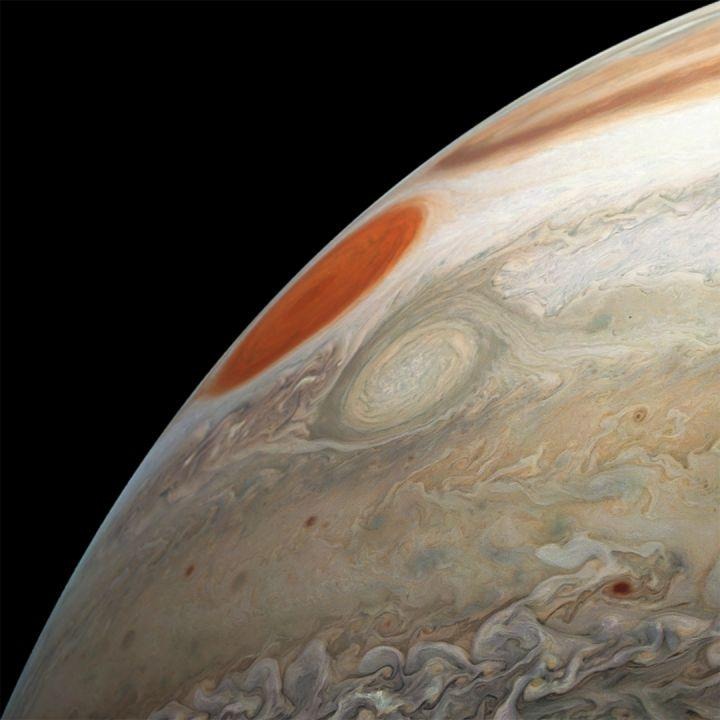NASA's Juno spacecraft snaps image of two massive storms on Jupiter
NASA's Juno spacecraft has sent back a new image of Jupiter showing two huge storms currently taking place on the planet. According to NASA's mission update, the new image was captured during Juno's most recent flyby in late December, the spacecraft having managed to capture Jupiter's iconic Great Red Spot, as well as another less colorful storm, in the same stunning photo.
Jupiter has a striking blemish on its surface, a mark that looks like a big reddish dot. The color and shape has earned the feature its Great Red Spot moniker, and though it's hard to appreciate how massive it is from photographs, NASA has another way of putting it in perspective: the spot is twice as wide as Earth.
Though it appears to be a feature on the planet's landscape, the Great Red Spot is actually a gigantic storm that has been raging on Jupiter for at least the past 150 years, according to NASA, and it is expected to continue for at least a couple more decades. Jupiter's lack of a solid ground enables storms to brew for long periods of time.

The storm's reddish hues make the Great Red Spot notable, but it's hardly the first or only storm on the gas giant. Other storms make their appearances, some starting out small (relatively speaking) and later merging together into larger, singular storms. That's what happened with the second storm featured in the image above, one called Oval BA — according to NASA, it formed from three smaller storms that merged together back in the year 2000.
This isn't the first time the space agency has received an image of the storm Oval BA. The most recent image — excluding the new one from December — was taken in February 2018. In that image, the storm features a reddish color; it was only in recent months that it transformed to the white shades it now presents.
The raw image was taken by the spacecraft's JunoCam on December 21, 2018, at around 12:32PM EST from a distance of between 28,000 and 34,500 miles. A huge collection of Juno's images can be found on the mission's gallery page here.
